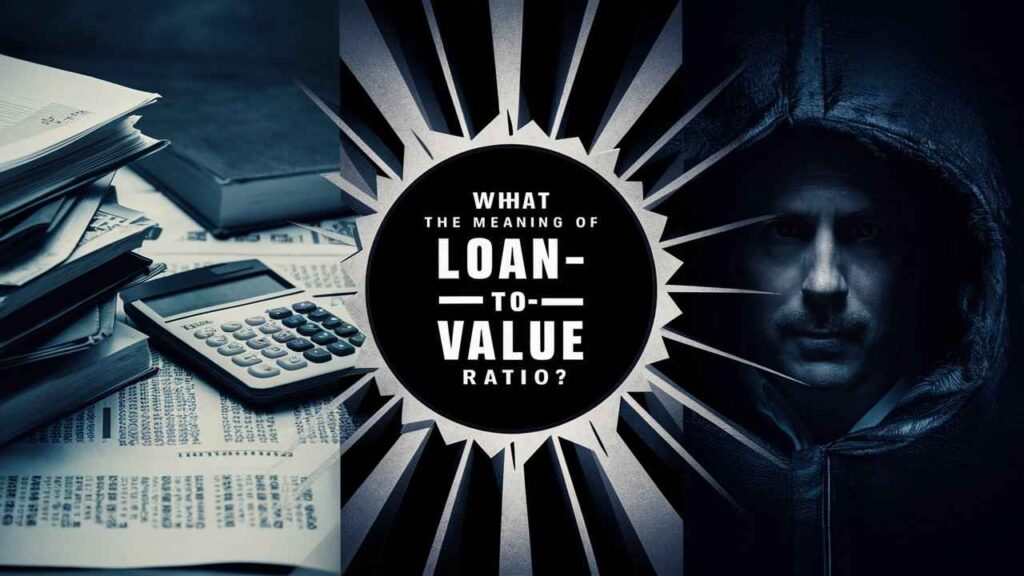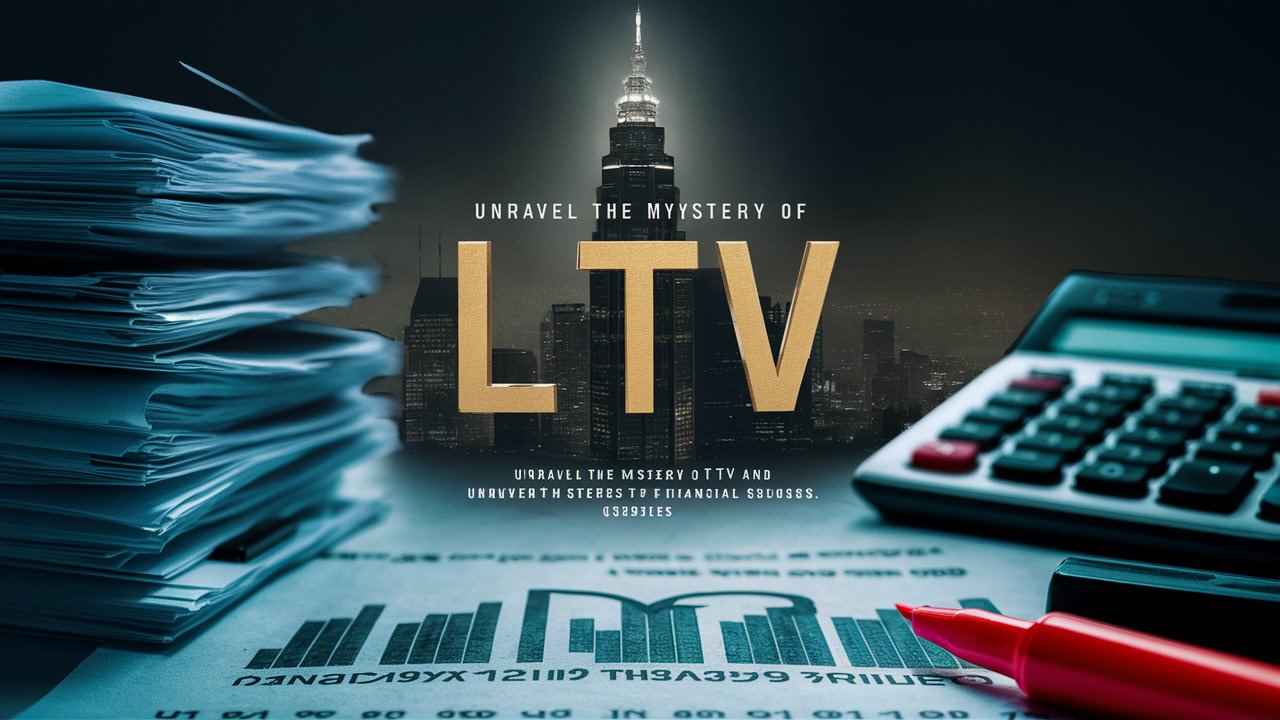Decoding the Loan-to-Value Ratio (LTV)
The world of mortgages can feel like a dense thicket of jargon. But every once in a while, a term pops up that holds the key to unlocking financial savvy👪and one of those terms is Loan-to-Value Ratio. Now, don’t let that shiny acronym, LTV, scare you. It’s far more influential than you might expect. Understanding LTV could be the difference between snagging the home of your dreams or waving it goodbye.

The Power of LTV: Why It Matters More Than You Think
You might think LTV is just another random number in the mortgage jungle. But here’s the kicker👪it’s a critical factor that could dictate the size of your loan, the interest rate, and whether a lender even wants to tango with you. It’s more powerful than a cup of coffee on a Monday morning.
A Quick Overview: What’s Hiding Behind Those Numbers?
At first glance, LTV might seem like another blend of confusing digits, but behind those numbers lies the reality of how much risk a lender is taking on. LTV shows how much of your property’s value you’re borrowing, and that little percentage could make or break your deal. Let’s dig deeper.

LTV Basics: The Building Blocks of Borrowing
Loan-to-Value Ratio Defined: What Are We Talking About?
Simply put, the Loan-to-Value Ratio is the ratio between the amount of your loan and the value of the property. If you’re thinking of buying a home and you need a loan, this ratio tells your lender, “Hey, I’m borrowing 80% of the home’s value!” or whatever percentage fits the situation. It’s a glimpse into how much skin you’ve got in the game.👪
Why LTV is a Key Player in Mortgage Decisions
Lenders love LTV because it helps them assess risk. The lower your LTV, the more secure they feel. Think of it as the bank’s way of saying, “I trust you enough to lend you money without freaking out.” A high LTV, on the other hand, makes them sweat. More risk, more sweat, higher interest rates. Simple math, right?
How LTV Affects Your Loan Eligibility
Your LTV ratio can be the golden ticket or the deadbolt that stops you at the gate. Too high, and lenders may reject your loan faster than a squirrel dodging a car. But hit the sweet spot, and suddenly, you’re in the club, enjoying better loan terms, lower rates, and less of that nasty mortgage insurance.👪
The Math Behind the Magic: Calculating LTV
The Simple Formula: It’s Easier Than Algebra (Promise)
Breathe easy👪you won’t need a graphing calculator for this one. To calculate your Loan-to-Value Ratio, divide the loan amount by the appraised value of the property, then multiply by 100 to get a percentage. That’s it! Easier than remembering your Netflix password.
Breaking Down the Equation: Loan Amount vs. Property Value
Let’s say you want a $200,000 loan for a home appraised at $250,000. Divide $200,000 by $250,000 and you get 0.8. Multiply that by 100, and voila👪your LTV is 80%. It’s a delicate balance of loan size versus property value, but that 80% will give lenders some peace of mind.
Understanding the Impact of Down Payments on LTV
Ah, the down payment👪your secret weapon against a high LTV. The larger your down payment, the lower your Loan-to-Value Ratio. If you put down 20%, your LTV drops, and suddenly, lenders are rolling out the red carpet. It’s like showing them you’ve got a solid handle on things.

Why Does LTV Matter to Lenders?
LTV as a Risk Indicator: The Lender’s Perspective
Lenders have a soft spot for low-risk borrowers. A low LTV tells them that you’ve got enough equity in the property that you’re unlikely to just walk away from the mortgage. High LTV? Now you’re in risky territory, and no lender likes to play in risky sandboxes.
How LTV Helps Determine Interest Rates
The lower the Loan-to-Value Ratio, the better your interest rates. If your LTV is high, expect the bank to slap on some higher interest to hedge their bets. It’s like buying insurance for them👪and you’re the one footing the bill.
LTV and Mortgage Insurance: When It Kicks In
If your LTV is above 80%, mortgage insurance will come knocking at your door. Why? Because lenders want extra protection in case you default. Private mortgage insurance (PMI) can be a deal-breaker for some, so aim to keep your LTV low to avoid this sneaky fee.

High LTV vs. Low LTV: What’s the Difference?
High LTV: Risky Business or Smart Move?
A high Loan-to-Value Ratio can open doors to homeownership for those who don’t have heaps of cash for a down payment. But beware👪it’s a risky game. Higher LTV means higher rates, more insurance, and lenders who might eye you with suspicion.
Low LTV: The Sweet Spot for Borrowers
On the flip side, a low LTV is like a golden halo. It says you’re a low-risk borrower, and lenders will reward you with lower interest rates, fewer fees, and a smoother path to homeownership. You’re basically the teacher’s pet of the mortgage world.
The Trade-Off Between LTV and Interest Rates
It’s a classic trade-off: higher LTV means higher interest rates, and lower LTV means lower rates. The real question is, are you willing to pay more now or put down a larger chunk of cash upfront? Choose wisely, as this decision will follow you around for years to come.

LTV Across Different Loan Types
LTV and Conventional Loans: The Standard Approach
In the land of conventional loans, LTV is a key player. Lenders typically prefer an LTV of 80% or lower to avoid mortgage insurance and secure the best rates. Anything higher? Be prepared for added costs and a few more hoops to jump through.
LTV in FHA Loans: More Wiggle Room for Borrowers
FHA loans are the friendlier cousins of conventional loans. They allow a higher LTV👪up to 96.5% in some cases👪making them a solid option for those with smaller down payments. But beware, mortgage insurance sticks around for a while in these loans.
VA Loans and LTV: Special Perks for Veterans
VA loans are the hero of the mortgage world for veterans. They often allow 100% LTV with no mortgage insurance, a massive perk for those who’ve served. It’s like having an all-access pass to a great deal.
LTV in Jumbo Loans: When the Stakes Are Higher
In the world of jumbo loans, a low LTV is essential. Lenders are taking on big risks with larger loan amounts, so they want to see a lower Loan-to-Value Ratio👪typically 80% or less. If you’re thinking of going big, be prepared to bring a hefty down payment.

How LTV Impacts Your Home Purchase
The Role of LTV in Determining Your Loan Amount
Your LTV directly impacts how much a lender is willing to lend you. If your LTV is too high, they may limit the loan amount or offer you less favorable terms. It’s like a game of Jenga, and your LTV is the piece that keeps everything from tumbling down.
How LTV Affects Your Monthly Mortgage Payments
High LTV equals higher interest rates, and higher interest rates mean bigger monthly mortgage payments. So if you’re wondering why your mortgage bill feels a little heavy, blame the LTV.
LTV and Your Dream Home: Can You Afford It?
Your dream home might seem like it’s just within reach, but if your LTV is off, that dream could be yanked away. It’s crucial to understand how much home you can realistically afford with a manageable LTV.👪
The Importance of LTV for Refinancing
Refinancing and LTV: The Second-Chance Equation
Refinancing is like a do-over for your mortgage, and LTV plays a starring role. A lower LTV when refinancing can lead to better rates, saving you a heap of cash over the life of the loan.👪
Cash-Out Refinancing: How LTV Changes the Game
When it comes to cash-out refinancing, LTV is king. The lower your Loan-to-Value Ratio, the more cash you can pull out of your home’s equity. It’s like tapping into a hidden treasure.
How to Use LTV to Lower Your Interest Rate
By improving your LTV, you can refinance to get a lower interest rate, saving you thousands. The secret? Pay down your loan or increase your property value. It’s that simple.👪
People Also Ask
What is a good loan to value ratio?
A good Loan-to-Value Ratio (LTV) generally falls below 80%. Lenders view this as low-risk, offering better interest rates and avoiding the need for mortgage insurance. Anything below 80% is like a gold star on your mortgage application.
How is LTV calculated?
LTV is calculated by dividing the loan amount by the appraised value of the property, then multiplying by 100. The formula looks like this:
LTV = (Loan Amount ÷ Property Value) × 100
For example, if you borrow $150,000 on a $200,000 home, your LTV is 75%.
What does 60% LTV mean?
A 60% LTV means you’re borrowing 60% of the property’s appraised value. In other words, you’ve put in a 40% down payment, making you a low-risk borrower in the lender’s eyes. Expect to enjoy favorable loan terms.👪
What is good LTV?
A good LTV is typically 80% or less. This keeps you in the safe zone for favorable loan conditions and avoids the need for private mortgage insurance (PMI). The lower, the better for your interest rates.
What is a safe LTV?
A safe LTV is under 80%. This ratio ensures that you’re borrowing a manageable amount compared to the property’s value, keeping your payments comfortable and minimizing risk for both you and the lender.
Why calculate LTV?
Calculating LTV helps lenders assess how much risk they’re taking on with your loan. For borrowers, it gives you insight into how much equity you have in the property and whether you need mortgage insurance.
What is the LTV limit?
The LTV limit depends on the type of loan. Conventional loans typically cap at 80% for the best rates, while FHA loans may allow up to 96.5%, and VA loans often allow 100% LTV. Lenders may have their own maximums based on the loan program.
What is the LTV rate?
The LTV rate refers to the interest rate tied to your LTV. A lower LTV generally results in a lower interest rate because the loan poses less risk to the lender. The higher your LTV, the higher your interest rate is likely to be.
What is the maximum LTV?
The maximum LTV varies by loan type. Conventional loans usually max out at 95%, FHA loans go up to 96.5%, and VA loans can hit 100%. Jumbo loans may have stricter LTV limits, typically around 70-80%.
What is the formula for LTV cost?
The formula for LTV cost isn’t complicated. It’s simply the loan amount divided by the appraised property value, multiplied by 100:
LTV = (Loan Amount ÷ Property Value) × 100
This will give you a percentage that represents your loan-to-value ratio.
How to calculate loan to value ratio?
To calculate the loan-to-value ratio:
- Take the amount of the loan.
- Divide it by the appraised value of the property.
- Multiply by 100 to get a percentage.
For instance, a $180,000 loan on a $240,000 property would have a 75% LTV.
How to define LTV?
LTV is defined as the percentage of a property’s value that is being borrowed. It’s a metric lenders use to gauge how much of the purchase price is being financed versus what is covered by the borrower’s down payment.
What does 70% loan to value ratio mean?
A 70% loan-to-value ratio means you’re borrowing 70% of the property’s value, with the remaining 30% either coming from a down payment or existing equity. It’s considered a relatively low-risk scenario for lenders.
What is LTV in banking?
In banking, LTV (Loan-to-Value Ratio) is a key metric that helps financial institutions determine how risky a loan is. It measures the amount of a loan relative to the appraised value of an asset, such as a house or car. The higher the LTV, the more risk the lender assumes.









